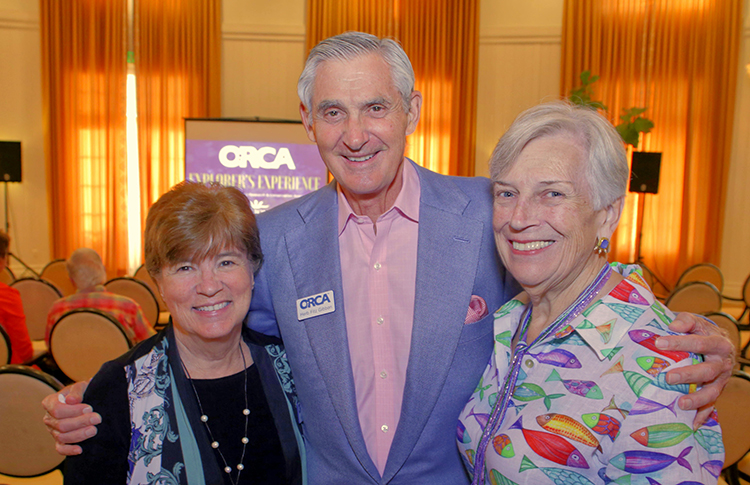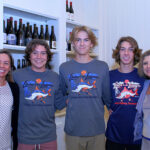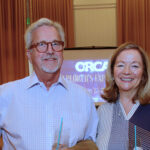
The Ocean Research and Conservation Association founded by Edith “Edie” Widder, Ph.D. in 2005, will soon begin a new chapter with its upcoming move to Vero Beach.
At a reception at the Quail Valley River Club supporters of the nonprofit were informed that ORCA was in the final stages of its $1.2 million Capital Campaign to purchase and renovate the new headquarters.
They received a significant boost this past spring, when Trudie Rainone contributed $500,000 from the estate of her son, Donald “D.J.” Rainone, who passed away in November 2021 after a courageous battle with cancer. The building will be named the D.J. Rainone Research and Science Building in his memory.
Rainone shared that her son, who loved the ocean, told her that he wanted to be cremated and have his ashes scattered there. She explained simply, “So my son is in the ocean and now I have to take care of the ocean.”
“This is such a special night for ORCA. I can’t tell you how happy it makes me. We are so, so grateful to the people that made it possible for us to raise the money for this,” said Widder.
“So the point of this report to donors is to share with you some of the remarkable data that we’ve been able to collect. The data that we’ve been able to collect is even more powerful than I would have imagined.”
There are currently 18 Kilroy water-quality monitors that are mapping pollution along 156 miles of the lagoon, and they will soon add four more. The devices are essentially an early-warning system for the toxic algal blooms caused by nitrogen and phosphorus.
“Do not think it cannot get worse; it can get a lot worse,” said Widder.
“A lot of people think we understand how our life support systems work on this planet. We don’t, especially in an estuary, which is one of the most complicated systems there is in terms of the biology of the planet,” said Widder.
Missy Weiss, director of Citizen Science & Education, said that regardless of age or background, anyone can participate in their Citizen Science data collection initiatives.
Land to Sea (formerly Living Shoreline Monitoring) volunteers are installing buffered shoreline barriers between land and waterways to limit excess nitrate, phosphate and ammonia runoff from entering the water systems. Weiss said that not only are they beautiful, but they also provide wildlife habitat, increase biodiversity and minimize erosion. They are also easy to do and can make an immediate impact.
Pollution Mapping volunteers are monitoring 25 sampling sites across four counties four times a year, collecting and measuring water-quality parameters and collecting sediments that are tested for toxicity, microplastics, herbicides and other contaminants such as, increasingly, glyphosate, the active ingredient in Roundup.
One Health Fish Monitoring looks at the interactivity between environmental, animal and human health, particularly whether the toxins and pollution in the commonly consumed fish is transferring to humans.
Volunteers dissect and test for microcystin, mercury, cadmium, glyphosate and microplastics, which she says are everywhere, from the air we breathe to the food we eat. They partner with the University of Florida to have some specimens tested for such chemicals as pharmaceuticals and controlled substances.
A Day in the Life of the Indian River Lagoon introduces students to science research through a one-day annual event that partners with environmental organizations to test 47 sites along a 156-mile stretch of the lagoon.
“We can’t do any of this without our supporters. We can’t do anything without our citizen scientists, but we need to be able to have the funds to continue the hard work that we’re doing and that they’re doing. And we thank all of you in this room who have supported us in our journey and continue to do so,” said Weiss.
For more information, visit TeamORCA.org.
Photos by Mary Schenkel
















